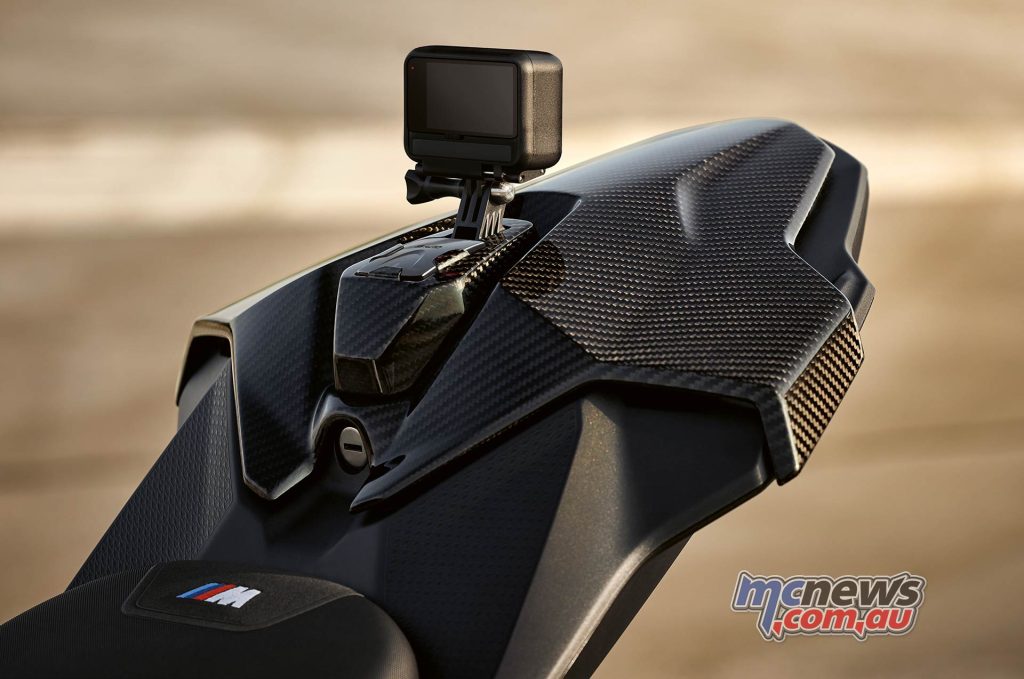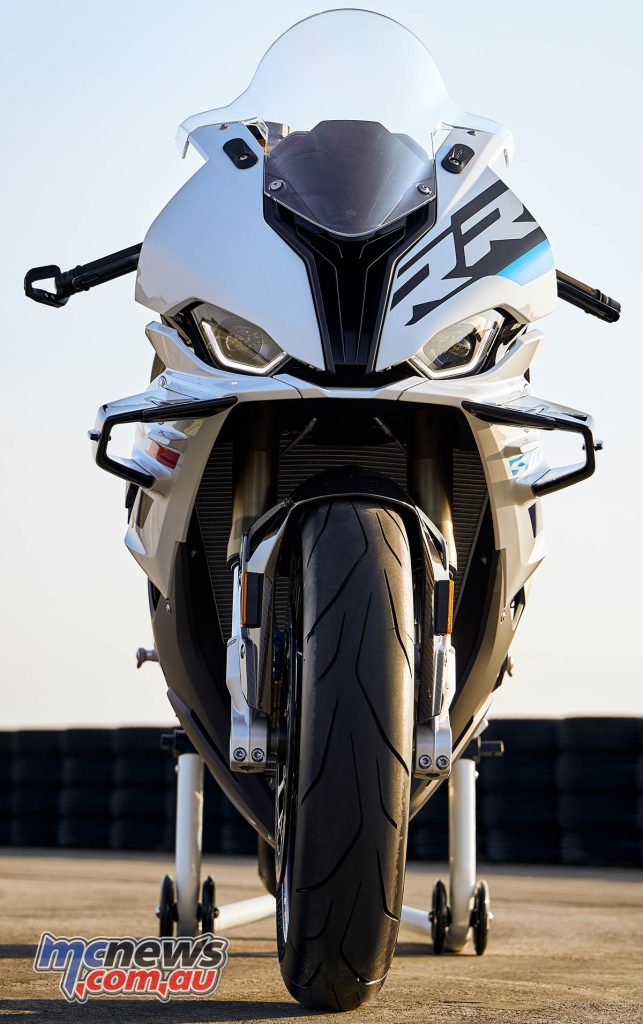2023 BMW S 1000 RR
For 2023 the BMW S 1000 RR gets more than a few nips and tucks along with a few more neddies to power it in to the new year.
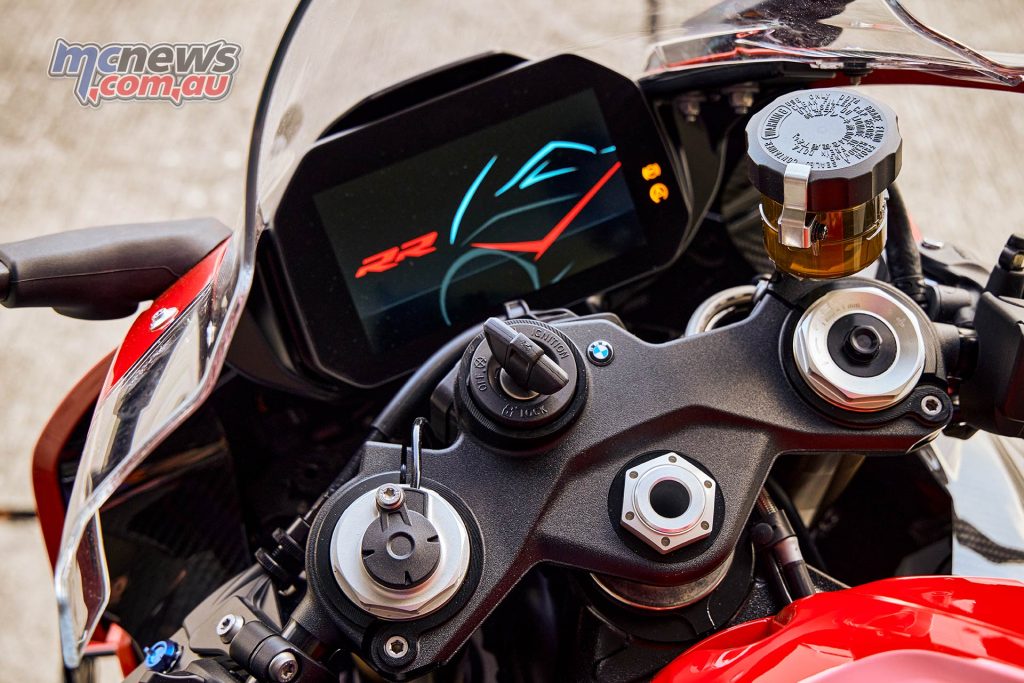
A lot of features previously only seen on the M model now become standard on the base model S 1000 RR which is expected to arrive in Australia at some point during the first half of 2023.
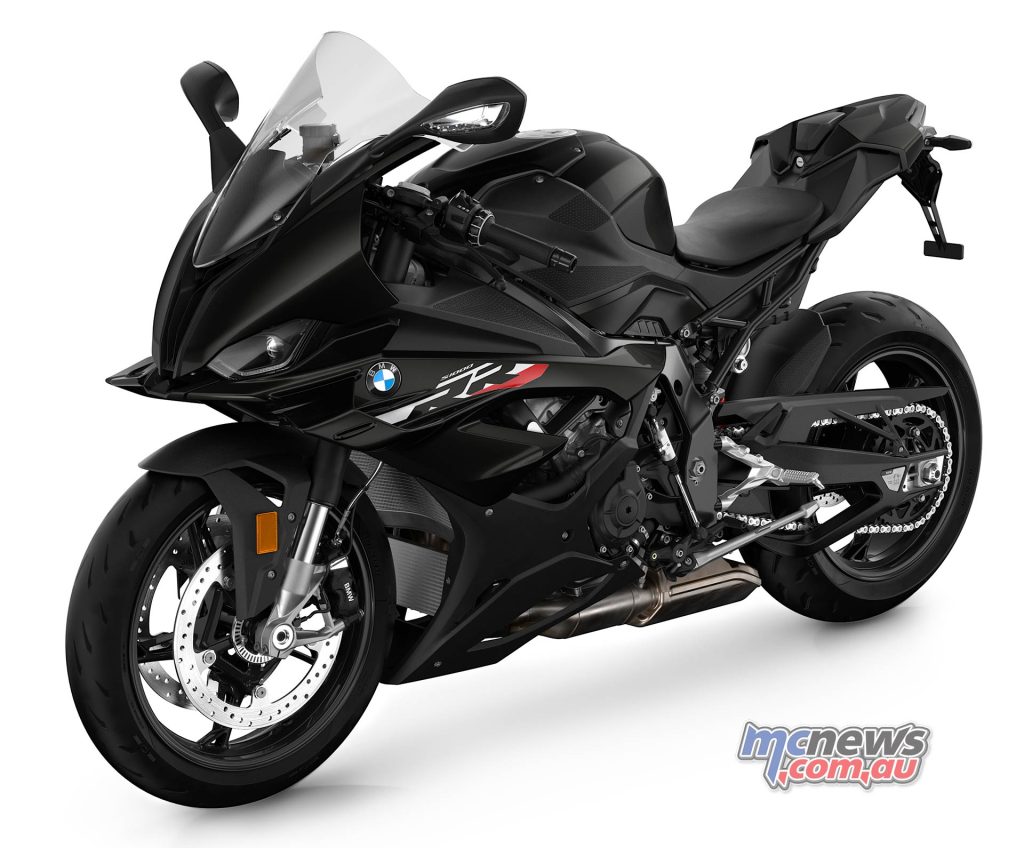
BMW Motorrad Australia have indicated to us that the 2023 BMW S 1000 RR will retail from $25,750 + ORC.
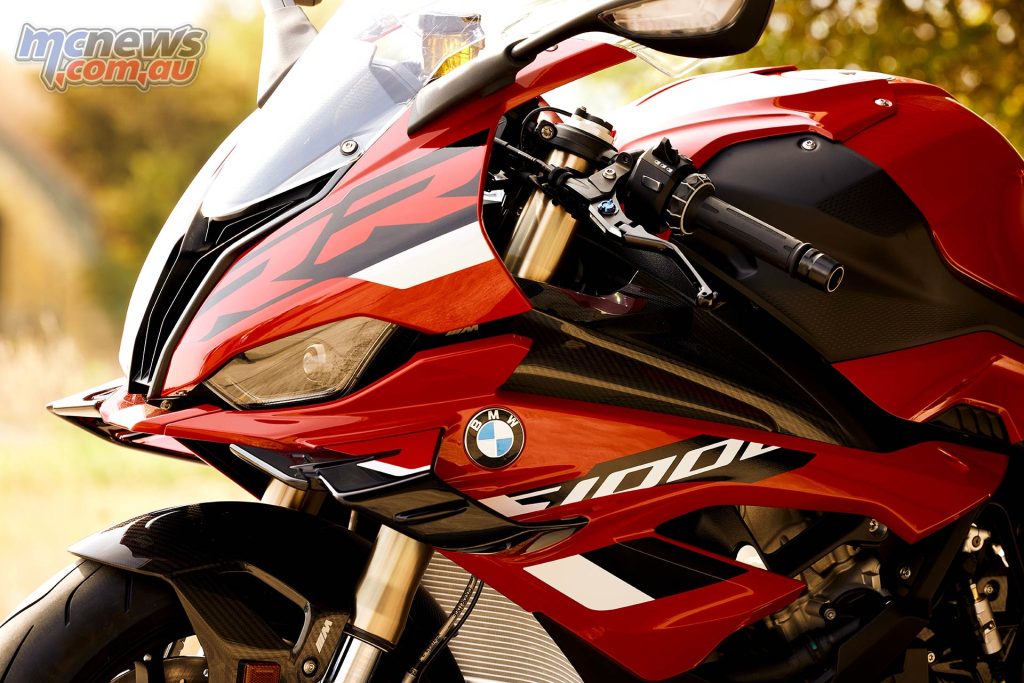
The new RR features a 4-cylinder in-line engine based on the power unit of the current S 1000 RR. Peak power is now 154 kW (210 hp) at 13,750 rpm, 2 kW (3 hp) more than the previous model thanks to intake geometry and air-box that was previously only available on the M model.
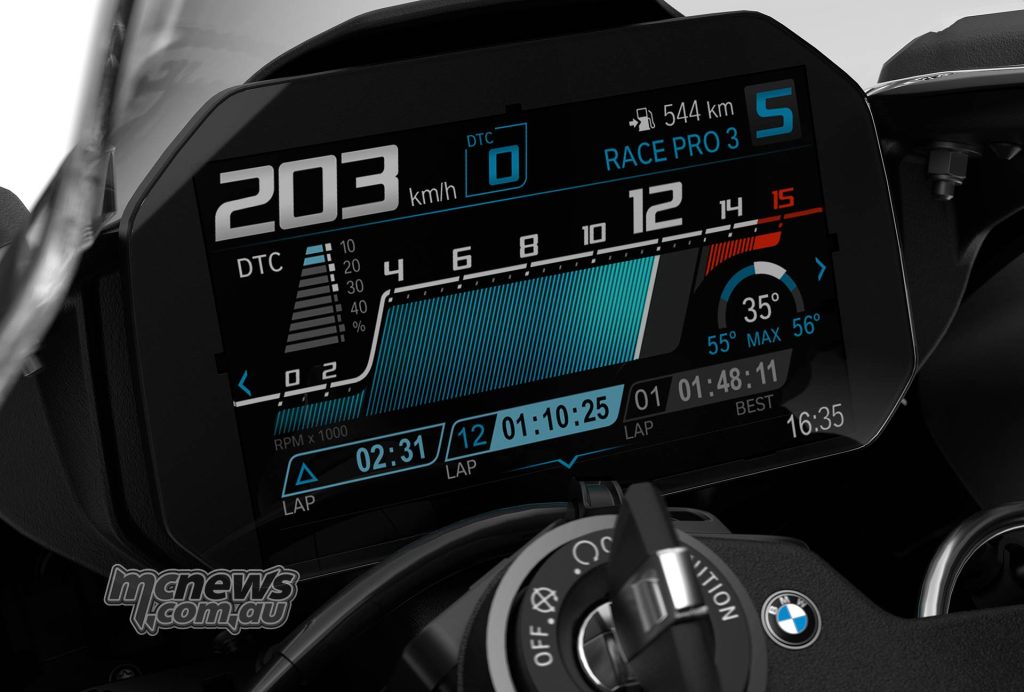
The maximum torque of 113 Nm is generated at 11,000 rpm.
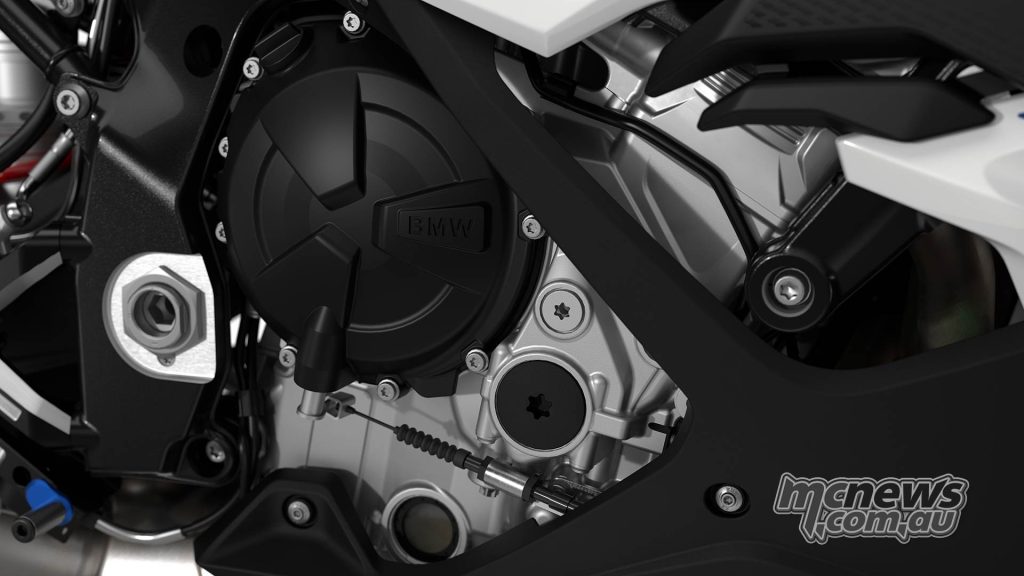
In spite of an increase in peak output, the usable engine speed range of the new RR is now claimed to be significantly broader and the bike is geared slightly shorter thanks to one more tooth on the rear sprocket.
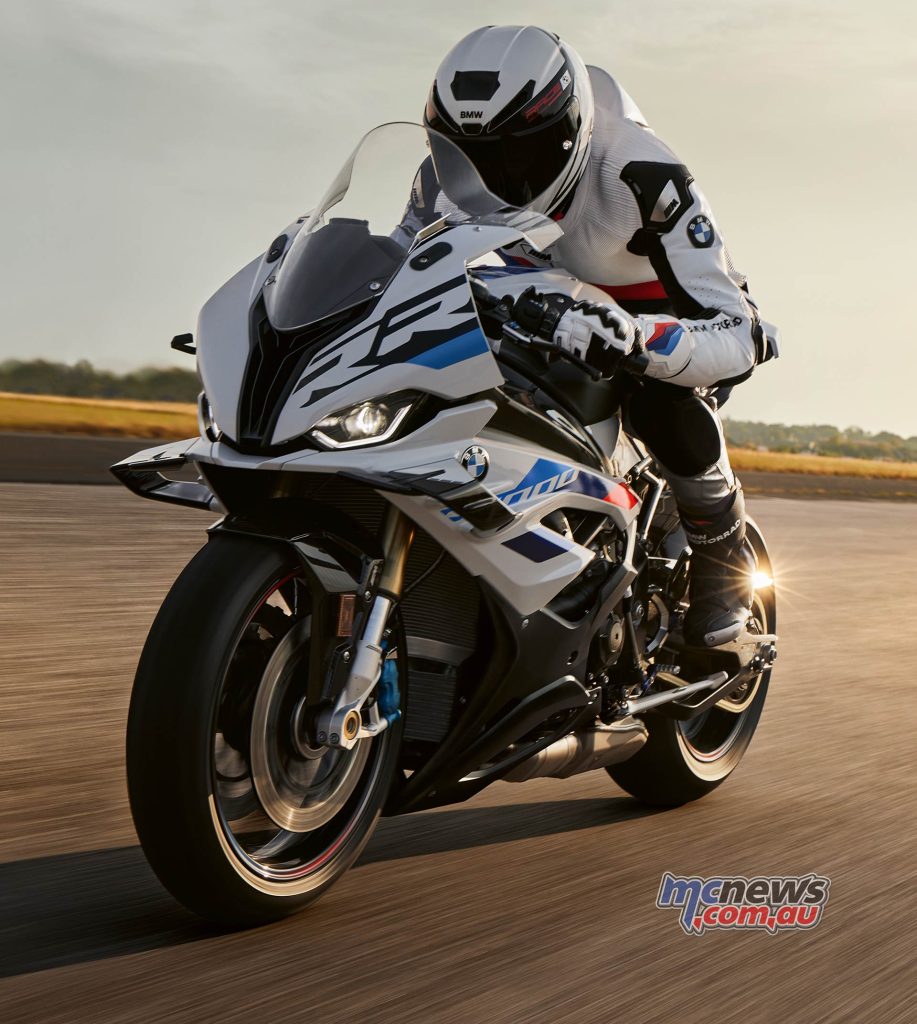
Shift Assistant Pro has been improved in a few points. The rider’s shift request is now implemented via a torque model and thus enables shifts in all operating ranges.
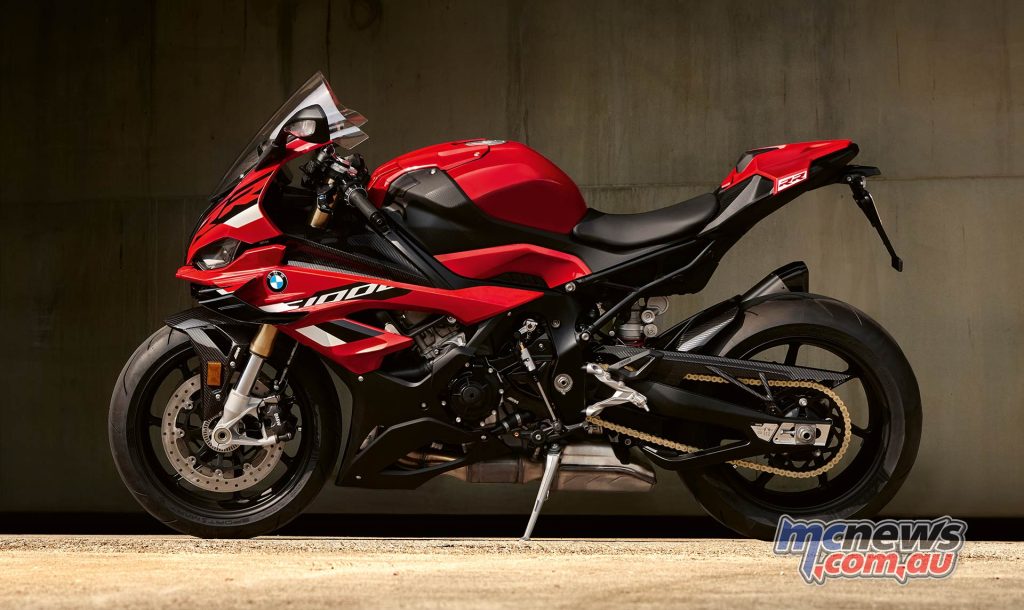
The steering head angle has been flattened out by 0.5° (66.4° instead of the previous 66.9°) and the offset of the triple clamps is reduced by 3 mm.
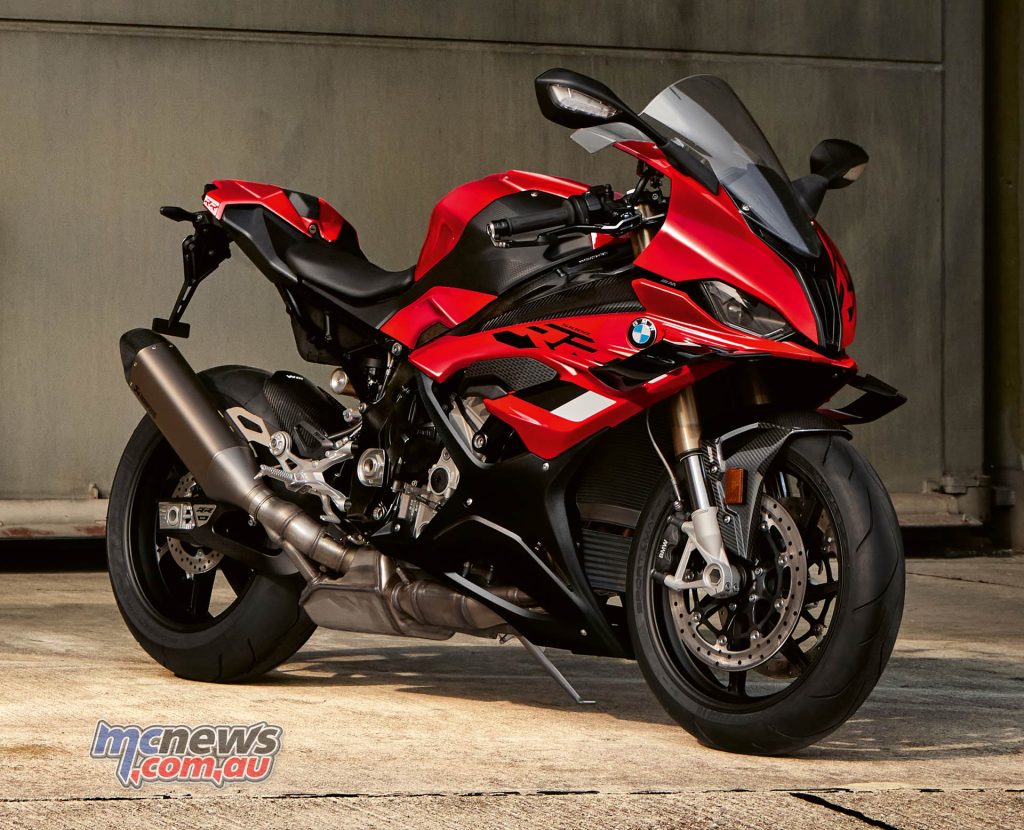
Accordingly, the caster was increased from 93.9 mm to 99.8 mm. At the same time, the wheelbase was extended to 1,457 mm.
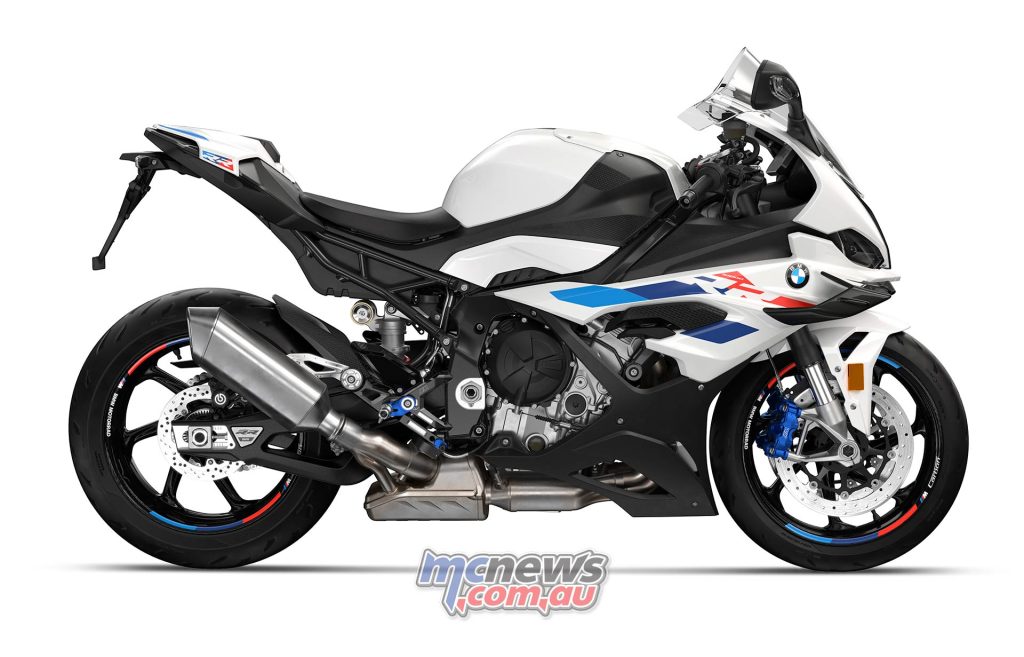
The M Chassis Kit is now standard with adjustable swing-arm pivot point, raised rear end and the suspension strut is not height-adjustable.
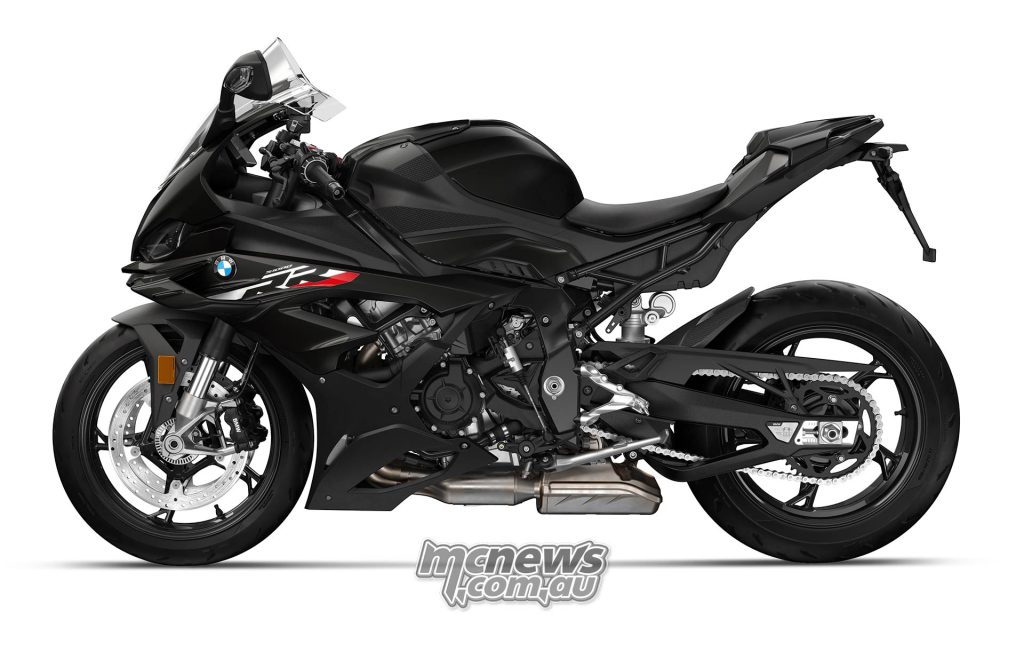
For easier removal and installation of the rear wheel, the axle bushings on the rear wheel on the right side are now mounted to prevent loss and the brake pads and the brake anchor plate are chamfered.
The new feature of Dynamic Traction Control DTC is the Slide Control function. It allows the rider to select two preset drift angles for the traction control system when accelerating out of bends. Technically, this is achieved using a steering angle sensor. Up to the respective leaning angle, the traction control system allows slippage at the rear wheel when accelerating out of a bend, thus enabling rear wheel drift. When the preset steering angle value is reached, traction control intervenes, reduces slip and stabilises the motorcycle.
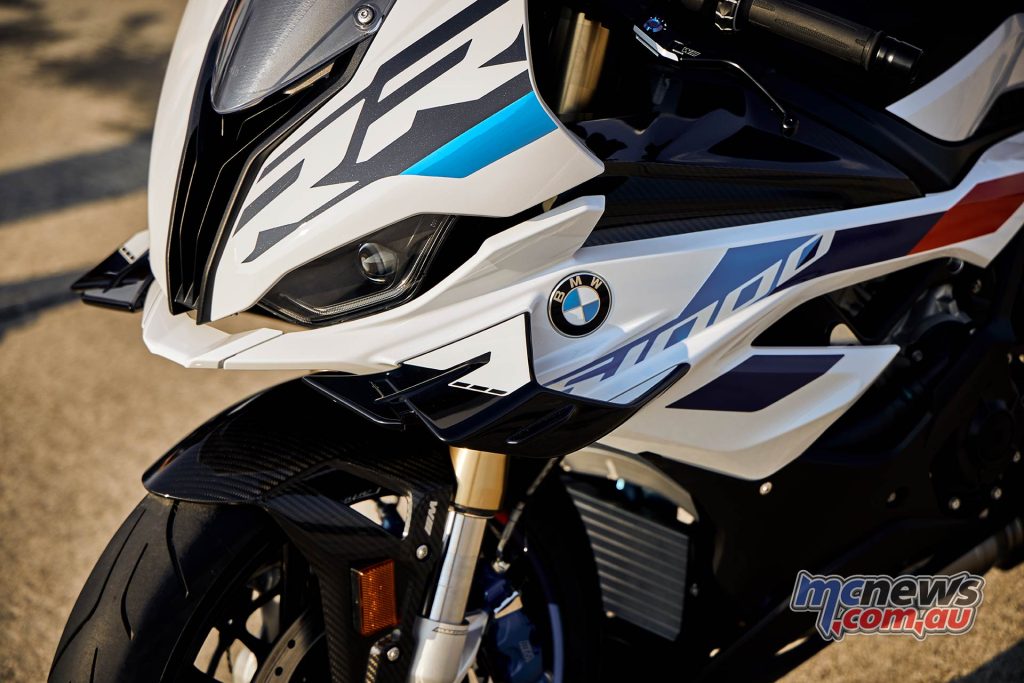
The new Brake Slide Assist function is an important and very helpful innovation for race track riders. As in the new DTC Slide Control function, this new system is also based on steering angle sensors and allows the rider to set a specific drift angle for so-called braking drifts while sliding into corners at a maintained speed.
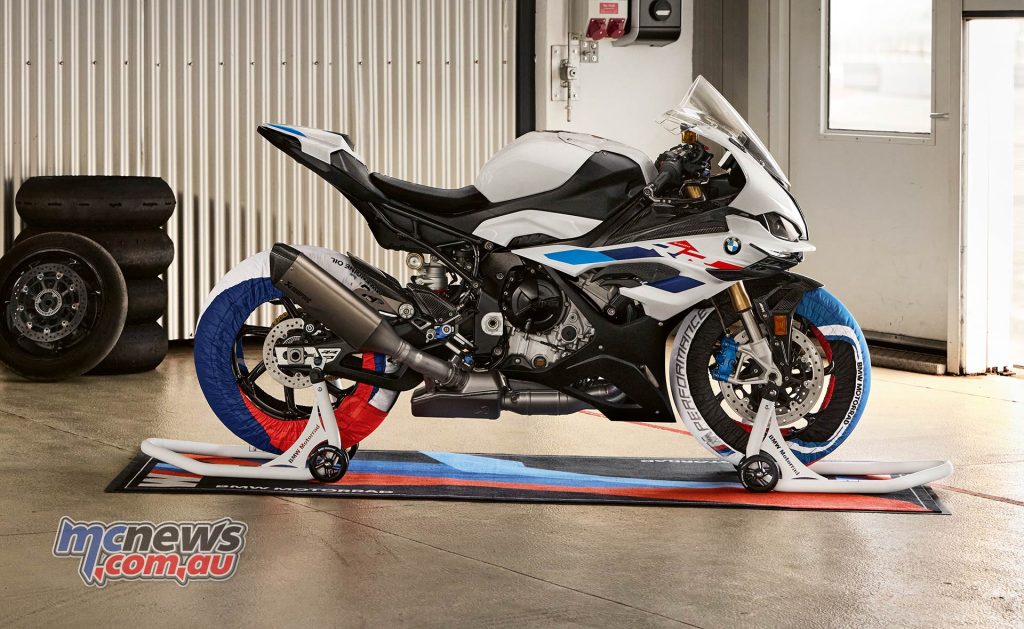
The new edition of the RR benefits from a redesigned front section including winglets, a new, lighter and sportier-looking rear section and three new colour schemes.
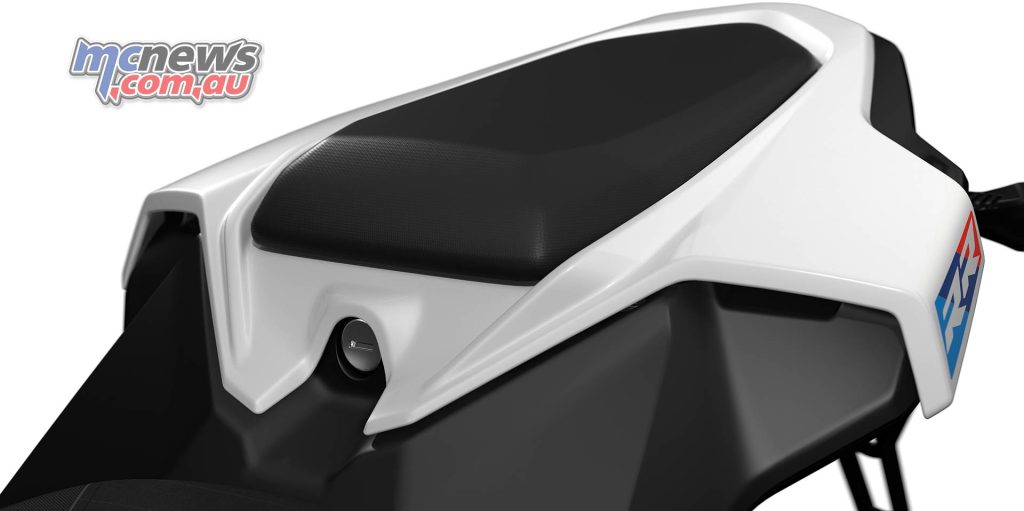
The wiring harness is optimised for faster removal of the number plate holder and the M battery and USB charging socket is now standard.
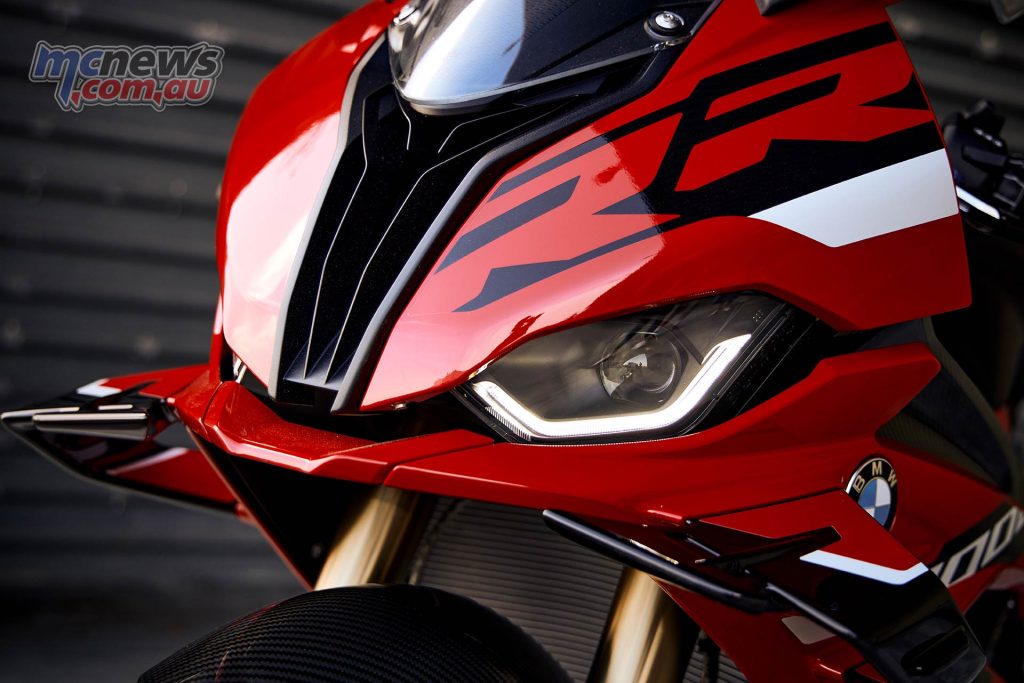
2023 BMW S 1000 RR Specifications
| BMW S 1000 RR | |
| Engine | |
| Capacity | 999 cc |
| Bore/stroke | 80/49.7 mm |
| Power | 154/210 kW/hp 13,750 rpm |
| Torque | 113 Nm 11,000 rpm |
| Type | Water-cooled in-line 4-cylinder engine |
| Compression/fuel | 13.3:1 / Premium unleaded petrol, octane rating 95-98 (RON) (knock control; rated power at 98 RON) |
| Valve/accelerator actuation | DOHC (double overhead camshaft), nd variable intake camshaft control system BMW ShiftCam Valve actuation via single cam followers |
| Valves per cylinder | 4 |
| Ø intake/outlet | 33.5/27.2 mm |
| Throttle valve diameter | 48 mm |
| Engine control | BMS-O |
| Emission control | Closed-loop three-way catalytic converter |
| Electrical system | |
| Alternator | 450 W |
| Battery | M Battery 12 V 5 Ah V/Ah |
| Headlamp | LED low beam twin headlamp in free-form technology |
| LED high beam free-form surface/modular design | |
| Starter | 0.8 kW |
| Power transmission – gearbox | |
| Clutch | Self-reinforcing multi-plate anti-hopping oil bath clutch, mechanically operated |
| Gearbox | Constant-mesh 6-speed gearbox |
| Primary ratio | 1.652 |
| Transmission ratios | 2.647 |
| I | 2.647 |
| II | 2.091 |
| III | 1.727 |
| IV | 1.500 |
| V | 1.360 |
| VI | 1.261 |
| Rear wheel drive | Chain |
| Secondary ratio | 2.706 |
| Suspension | |
| Frame construction type | Aluminium composite bridge frame, engine self-supporting |
| Front wheel suspension | Upside-down telescopic fork, slide tube diameter 45 mm, spring preload, compression and rebound stage adjustable, DDC option: damping electronically adjustable |
| Rear wheel suspension | Aluminium underslung double-sided swinging arm with central spring strut, spring preload, adjustable compression and rebound stage, DDC option: damping electronically adjustable |
| Spring travel, front/rear | 120/117 mm |
| Wheel castor | 99.8 mm |
| Wheelbase | 1,457 mm |
| Steering head angle | °66.4 |
| Brakes Front | Twin disc brake, floating, Ø 320 mm, radial 4-piston fixed calipers |
| Brake Rear | Single-disc brake, Ø 220 mm, single-piston floating caliper |
| ABS | BMW Motorrad ABS Pro (part integral, disengageable) |
| Traction control | BMW Motorrad DTC |
| Wheels | Standard: Die-cast aluminium wheels |
| M aluminium forged wheels as part of Race Package option | |
| M Carbon wheels as part of M Package option | |
| Front Wheel | 3.50 x 17″ |
| Rear Wheel | 6.00 x 17″ |
| Front Tyre | 120/70 ZR17 |
| Rear Tyre | 190/55 ZR17 |
| Dimensions and weights | |
| Total length | 2,073 mm |
| Total width with mirrors | 846 mm |
| Seat height | 824 mm |
| DIN unladen weight, fully fuelled | Standard: 197kg with Race Package option 195.4, with M Package option 193.5 |
| Permitted total weight | 407 kg |
| Fuel tank capacity | 16.5l |
| Performance Figures | |
| Fuel consumption (WMTC) | 6.4 l/100 km |
| CO2 | 149g/km |
| Acceleration 0-100 km/h | 3.2s |
| Top speed | 300km/h |
